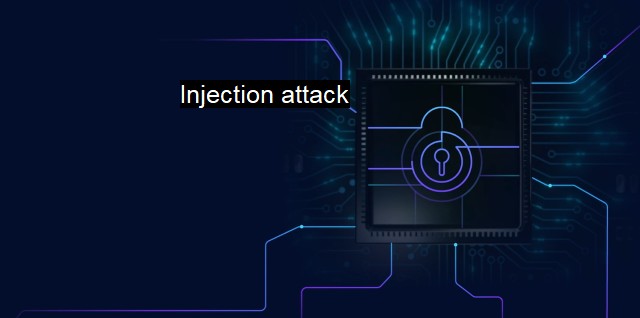What is Injection attack?
The Threat of Injection Attacks: Types, Impacts, and Countermeasures for Ensuring Cybersecurity in a Digitized World
An injection attack is a form of cyber threat that exploits system vulnerabilities in the language of an application's database query. It uses an application layer to initiate the attack and manipulate the functioning of the target database. They happen when an attacker conveys malicious data to a program which indent interprets as a command.There are multiple types of injection attacks, but all share the ability to exploit the communication between a user interface and an application's database. These attacks include code injection, SQL injection, OS command attacks, script injection, and LDAP injection, and they exploit various sets of database structures using different methods to perform their malicious actions.
One common type of injection attack is a Structured Query Language (SQL) attack. In this scenario, the attacker provides misleading SQL commands that manipulate a web application's database, potentially leading to unauthorized access. By inserting particular strings into the user’s text inputs, the attacker can then generate further inputs that alter the web application’s SQL commands. Therefore, the SQL system executes tasks that are usually advantageous to the hacker, like alteration, deletion, or retrieval of data they normally couldn't access.
Similarly, operating system (OS) command attacks enable attackers to execute arbitrary commands in a host’s OS. In such attacks, hackers manipulate a web application to execute arbitrary OS commands, typically via a system call by the application. Hackers often conduct OS command attacks on system functionality that launches external processes like sending emails, transferring files, or causing a delay.
Recognizing and preventing injection attacks is of paramount importance. A key principle to prevent injection attacks is "assume everything is a threat unless known to be secure". Therefore, filtering input variables and checking everything in the application before deployment is a key defense strategy.
Preventing injection attacks requires both code-level security mechanisms and wider organizational security controls. It starts with properly validating user inputs. For instance, a developer should validate and sanitize any user input and interpret it as data rather than a command. One can use data classification and validation tools to automatically reject inappropriate data, thereby reducing vulnerability.
Developers should also consider using parameterized queries or prepared statements that cautiously distinguish between code and data. the use of web application firewalls provides an additional layer of security against injection attacks.
Alongside these technical solutions, adopting a robust cybersecurity culture within employees can greatly reduce the risk of injection attacks. This culture includes basic data security training for all staff, alongside more nuanced training for those involved in development and coding roles. Regular software updates also defend against known security holes that hackers could exploit.
Antivirus solutions hold an important role in defending against injection attacks, and many providers have started developing cybersecurity solutions that use advanced detection methods to recognize such threats. As new virus definitions are published, the antivirus identifies and protects the system from any potential threats, including types of injection attack. It is also essential to keep antivirus software updated, as new forms of attack surface every day.
As cyber-attacks grow more sophisticated, keeping up with security trends and techniques becomes increasingly important. The successful injection attack could lead to dire consequences like losing confidential data or incurring substantial financial losses. Therefore, developing robust strategies to prevent such attacks is imperative for maintaining the integrity of an entity's information systems.

Injection attack FAQs
What is an injection attack?
An injection attack is a type of cyber attack where an attacker injects malicious code or commands into a web page or application in order to exploit vulnerabilities and gain unauthorized access to data.What are the most common types of injection attacks?
The most common types of injection attacks include SQL injection, cross-site scripting (XSS), and command injection.How can I prevent injection attacks?
To prevent injection attacks, you should implement input validation and parameterized queries, sanitize user input, and use web application firewalls and other security tools. It's also important to keep your antivirus software up to date to detect and block known injection attacks.What are the consequences of an injection attack?
The consequences of an injection attack can be severe, including theft of sensitive data, unauthorized access to systems, and harm to your reputation. Injection attacks can also be used to distribute malware or facilitate other malicious activities, such as phishing scams or denial of service (DoS) attacks.| | A | | | B | | | C | | | D | | | E | | | F | | | G | | | H | | | I | | | J | | | K | | | L | | | M | |
| | N | | | O | | | P | | | Q | | | R | | | S | | | T | | | U | | | V | | | W | | | X | | | Y | | | Z | |
| | 1 | | | 2 | | | 3 | | | 4 | | | 7 | | | 8 | | |||||||